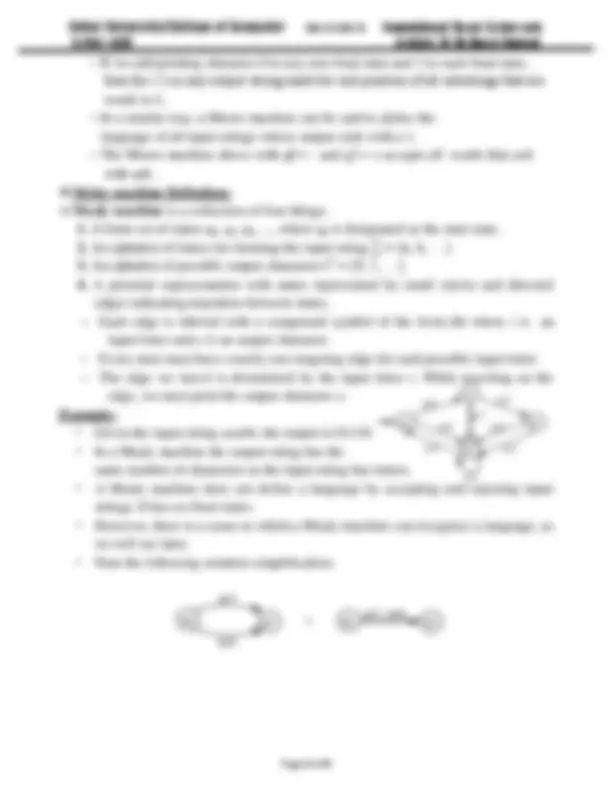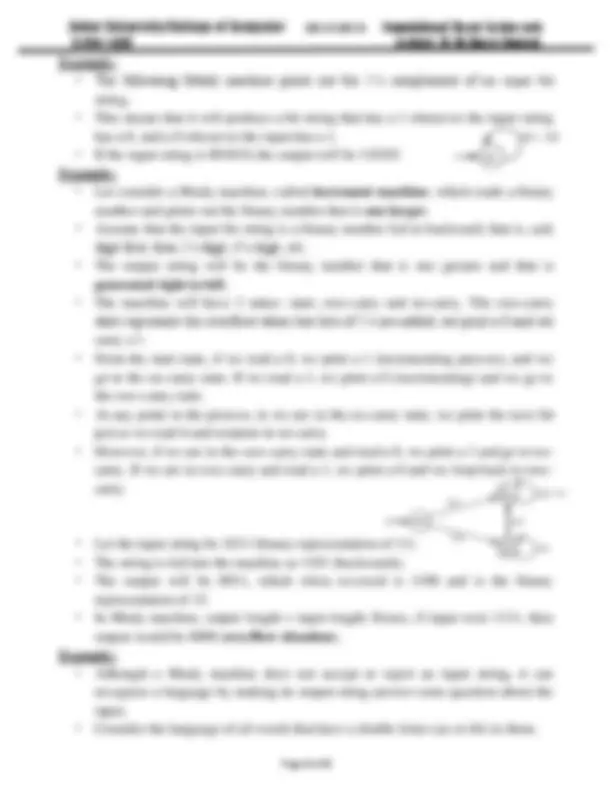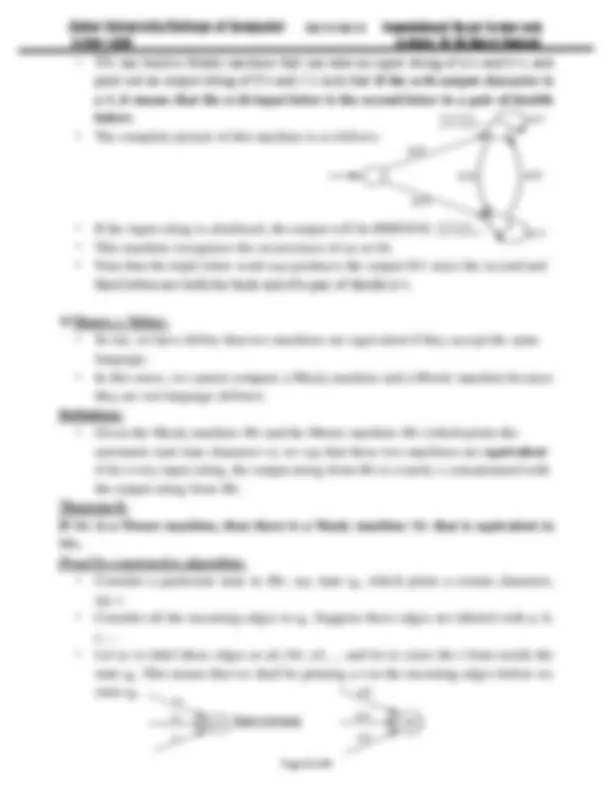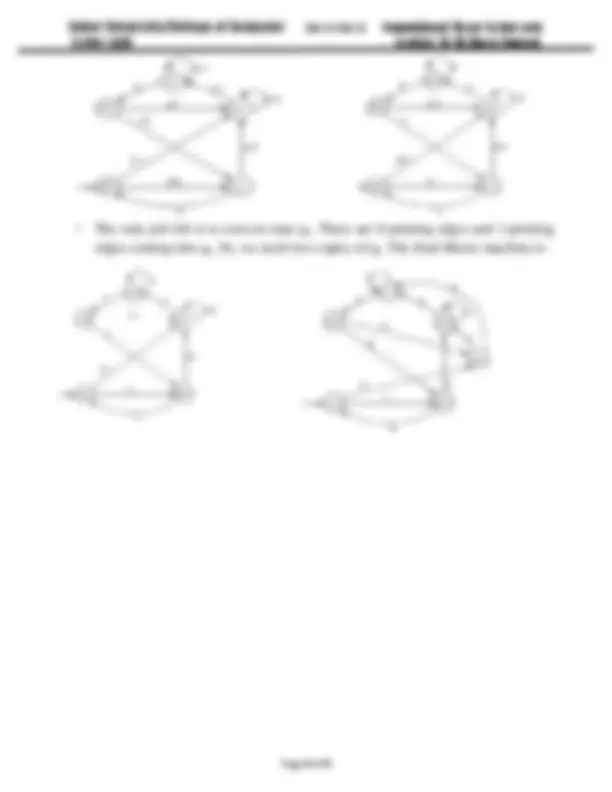






Study with the several resources on Docsity

Earn points by helping other students or get them with a premium plan


Prepare for your exams
Study with the several resources on Docsity

Earn points to download
Earn points by helping other students or get them with a premium plan
Community
Ask the community for help and clear up your study doubts
Discover the best universities in your country according to Docsity users
Free resources
Download our free guides on studying techniques, anxiety management strategies, and thesis advice from Docsity tutors
A lecture note on the theory of computational finite automata with output. It covers the definition of Moore machines and Mealy machines, their differences, and how they can be converted into each other. The document also includes examples and pictorial representations of Moore machines and Mealy machines.
Typology: Study notes
1 / 8

This page cannot be seen from the preview
Don't miss anything!





Lecture eight Lecturer: Dr Ali Jbaeer Dawood
Lecture Objective Moore Machines Mealy Machines Moore = Mealy
Moore Machine Definition: Moore machine is a collection of five things:
Lecture eight Lecturer: Dr Ali Jbaeer Dawood
Example: Moore machine defined by a table:
Pictorial Representation:
Lecture eight Lecturer: Dr Ali Jbaeer Dawood
Example:
Lecture eight Lecturer: Dr Ali Jbaeer Dawood
Moore = Melay:
Lecture eight Lecturer: Dr Ali Jbaeer Dawood
Lecture eight Lecturer: Dr Ali Jbaeer Dawood